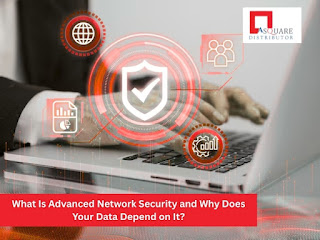Understanding Different Types of Biometric Attendance Systems
Biometric attendance systems have become an essential part of modern workforce management. As organizations look for accurate, secure, and efficient ways to record employee attendance, biometrics offer a solution that eliminates manual errors, reduces time theft, and strengthens workplace security. Instead of PINs, punch cards, or ID badges—which can be shared, misplaced, or manipulated—biometric systems rely on unique physiological or behavioral traits that cannot be duplicated.
Understanding the different types of biometric attendance systems helps businesses choose the right technology based on accuracy, budget, user experience, and security needs. Each biometric method comes with its own strengths and ideal use cases. Below is an in-depth look at the most common biometric systems used across industries today.
Fingerprint Recognition Systems
Fingerprint attendance systems are among the most widely used biometric solutions. They capture the unique patterns of ridges and valleys on a person’s fingertip and compare them against stored templates for verification.
Why Fingerprint Systems Are Popular
Fingerprint systems are cost-effective, easy to install, and quick for employees to use. Their accuracy is generally high, making them suitable for small to medium-sized organizations, retail outlets, workshops, schools, and administrative offices.
Limitations
In environments where employees handle chemicals, oil, dust, or heavy equipment, fingerprint quality may degrade, resulting in unsuccessful scans. Hygiene concerns can also arise in high-traffic settings where multiple people touch the same sensor.
Facial Recognition Systems
Facial recognition technology maps key facial features such as the distance between the eyes, nose shape, jawline, and other unique markers. It verifies identity without physical contact.
Key Advantages
Facial recognition is fast, hygienic, and ideal for environments where hands-free access is preferred. It works well in offices, hospitals, hospitality settings, and educational institutions. Modern systems can also function accurately in varied lighting conditions and even with masks, depending on the software.
Possible Challenges
Some facial systems may struggle with low-light environments or rapidly changing facial appearances. Privacy concerns and regulatory compliance around facial data must also be managed responsibly.
Iris Recognition Systems
Iris recognition uses the unique patterns in the colored portion of the eye. These patterns remain stable throughout a person’s life, making iris scanning highly reliable.
Why Iris Recognition Is Highly Secure
Iris scanning is considered one of the most accurate biometric methods. It works even when the user is wearing glasses or contact lenses. Because it is non-contact, it is also hygienic and reduces wear on devices.
Where It Works Best
Iris systems are often used in high-security sectors such as government institutions, research facilities, data centers, defense environments, and critical infrastructure. They are more expensive than fingerprint or facial systems but offer unmatched precision.
Retina Scanning Systems
Retina scanning maps the unique arrangement of blood vessels at the back of the eye. This pattern is almost impossible to forge.
Security Strengths
Retina scans offer extremely high security and accuracy, making them suitable for places handling confidential data or sensitive operations.
Considerations
Retina scanning requires the user to position their eye very close to the device, which can be uncomfortable. For this reason, retina systems are less common in general attendance tracking.
Palm Vein Recognition Systems
Palm vein technology uses near-infrared light to capture the vein pattern inside the hand. Since vein patterns are internal and unique, they are highly secure.
Why Companies Prefer Palm Vein Systems
Palm vein scanners are contactless, hygienic, and nearly impossible to duplicate. They also have strong performance even in dusty or industrial environments where fingerprint scanners might fail.
Best Use Cases
Manufacturing plants, hospitals, laboratories, and corporate environments where hygiene and high precision are essential.
Voice Recognition Systems
Voice recognition analyzes vocal patterns, tone, pitch, and speech rhythm to authenticate the user.
Strengths
This method allows hands-free authentication and works well for remote workforces who need to log in from different locations.
Weaknesses
Background noise can interfere with accuracy, and illnesses such as colds can temporarily alter voice patterns. Voice biometrics are usually supplementary rather than primary attendance methods.
Multi-Modal Biometric Systems
Multi-modal biometric systems combine two or more biometric methods, such as fingerprint plus face recognition or iris plus face recognition.
Why Multi-Modal Systems Are Effective
Combining biometrics increases accuracy, enhances security, and reduces the chances of false matches or failed verifications. These systems are ideal for large organizations with diverse working environments.
Where They Are Commonly Used
Government agencies, corporate headquarters, airports, universities, and large industrial workplaces.
Cloud-Based Biometric Attendance Systems
Many modern biometric attendance solutions integrate with cloud platforms. This allows data to be stored securely online, enabling real-time access, reporting, and analytics.
Benefits of Cloud Integration
Human resource teams can monitor attendance from anywhere, generate automated reports, calculate overtime, manage shifts, and integrate data with payroll software. Cloud systems are scalable and cost-effective for both small businesses and large enterprises.
How to Choose the Right Biometric Attendance System
Selecting the best biometric system depends on several key factors:
-
Work Environment: Dusty, wet, or industrial areas may not suit fingerprint scanners, while office spaces may benefit from facial systems.
-
Budget: Fingerprint systems are the most affordable, while iris and vein systems offer higher security at a higher cost.
-
Hygiene Requirements: Contactless systems such as face or palm vein recognition are ideal where hygiene is a priority.
-
Scalability Needs: Cloud-based systems offer flexibility for growing teams.
Understanding the environment and the organization’s security expectations helps in choosing the right system that balances accuracy, convenience, and long-term reliability.
The Future of Biometric Attendance
Emerging technologies such as artificial intelligence, machine learning, behavioral biometrics, and mobile-based face verification are shaping next-generation attendance systems. As companies adopt hybrid and flexible work models, biometrics will continue to evolve with advanced security features, faster processing, and seamless integrations.
Biometric attendance technology is no longer just about recording time. It is becoming a central part of workforce management, helping businesses improve productivity, strengthen security, and maintain accurate compliance records.




Comments
Post a Comment